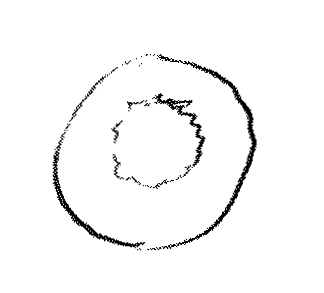From Maxwell Tylden Masters 7 February 1865
Rye Lane | Peckham.
Feb. 7./65.
My dear Sir/
I had the pleasure of hearing a portion of the summary of your paper on twining plants at the last meeting of the Linn. Society and I hope you will not think me intrusive by writing to you on the matter—1 As unfortunately I only heard part of the abstract read I do not know the extent of ground you travel over and hence perhaps the contents of this note may seem irrelevant, if so excuse me and throw aside this letter—
As an accidental occurrence, growth in a spiral direction takes place in two ways either as a twisting of the stem, branch or leaf as the case may be, upon itself in which instances the fibres of the organ are only secondarily and indirectly affected or the fibres of the stem etc themselves may be chiefly and primarily implicated— This condition is very often associated with the first but not necessarily so.— Moquin speaks of the first cases as “Enroulements” of the latter not very happily as Torsions.2 The latter cases occur very generally in Plants with opposite or verticillate leaves e.g. Galium (for a specimen of wh. I am indebted to yourself)—Dipsacus—Valerian Equisetum, Labiates &c. &c.3 Comparatively rarely does this spiralism affect plants with alternate leaves— As a consequence of this twisting of the stem it often happens that the leaves & branches instead of retaining their usual opposite, verticillate or decussate condition become placed one over the other along one edge—sometimes though more rarely in two rows— I enclose a drawing from a Dipsacus stem which I showed at the Linnean Society when I first began to study Botany and which puzzled me so much at the time that the description I gave of it though substantially correct I believe is by no means lucid—4
Some of these cases of spiral growth—if not all are dependent upon some obstacle to upward growth—resistance to motion—5 Again they are very frequently associated with fasciation—
—Another point I noticed in the resumé of your paper was the assumption by a petiole of the characteristics of an axis so far as its wood circle was concerned—under certain conditions—6 from this you drew the inference (quite in accordance with what I have always thought and indeed expressed in print) that there is a closer relationship between leaf & stem axis and appendage than is usually surmised.7 In truth the arrangement of the woody bundles in a leaf stalk depends on or at least is associated with differences in form in the stalk itself thus when the petiole is cylindrical the woody bundles are arranged in a ring
 instead of in a semi circle as they usually are in the channelled petioles
instead of in a semi circle as they usually are in the channelled petioles

In all peltate leaved plants the petiole is cylindrical and the woody bundles arranged in a ring—8
In one of the recent volumes of the Brit Assoc. Reports there is an abstract of a paper on this subject by myself wherein I endeavour to show that the grooved petiole has reference to the protection of the axillary bud from undue pressure etc etc9
I have some thoughts of putting together my notes on spiralism as a teratological phenomenon so as to form a paper for the Linn. Soc. but I shall wait till I see the results of your labors in extenso—10 meanwhile if by supplying references or in any other way I can be of the least assistance I shall be glad to do so if only to compensate for boring you with what may be irrelevant matters
faithfully yrs. | Maxwell. T. Masters
CD annotations
Please cite as “DCP-LETT-4766,” in Ɛpsilon: The Charles Darwin Collection accessed on